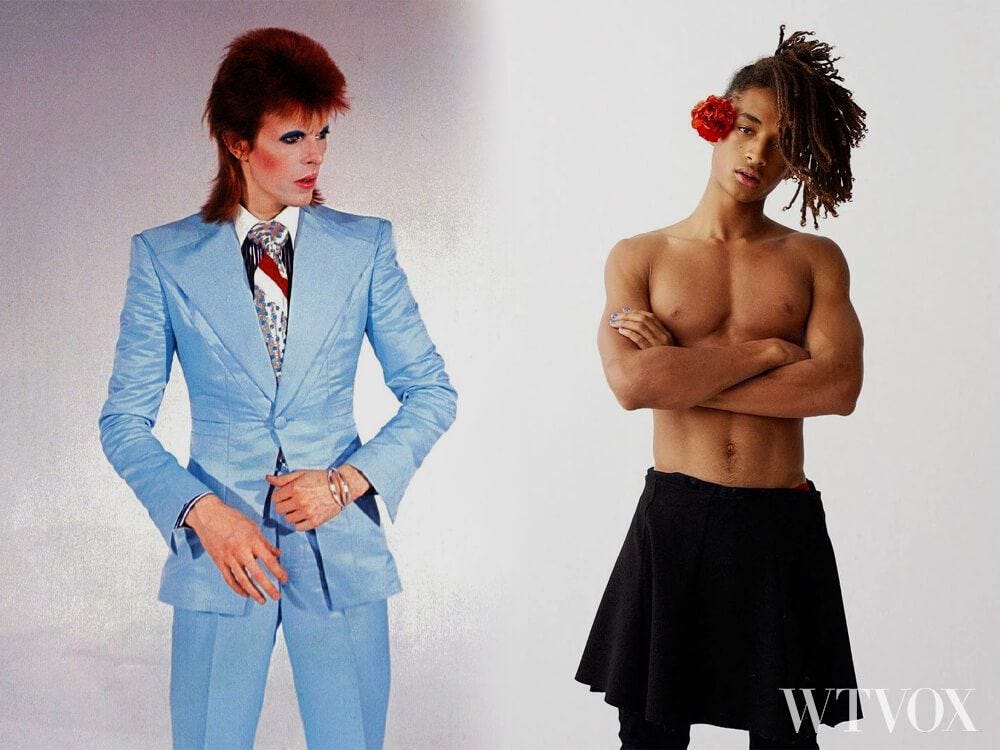Vintage fashion is so trendy right now; unfortunately, there’s a lot of confusion around retro, vintage, and antique clothing.
I’ve been running my vintage fashion store in central London for the last two years.
From every ten people entering my store, nine ask: “what does vintage mean in fashion?”
They also want to know what is considered vintage or, how old is vintage.
In this article, I’ll define vintage fashion and compare it with two other terms popular right now: retro and antique.
Then, at the end of the article, I’ll share 8 decade-defining vintage styles, from the 20s’ to the 90s’.
Without further ado, what does vintage mean in fashion?
Vintage Fashion Definition:
Vintage is a term used (in fashion) to describe old clothing made between 20 and 100 years ago. However, for a piece of apparel to qualify as vintage, it must comprise stylistic elements relevant to the trends of those times. Items older than 100 years are described as antique.
However, the terms ‘vintage’, ‘retro’ and ‘antique’ are often used interchangeably in fashion.
The age of the item is a crucial factor in differentiating between the terms.
Also, the age of the item is used to determine the price, together with the item’s condition and its rarity.
Therefore, using terms such as vintage clothing, retro and antique give the buyers clues to when items were made.
The Meaning Of Vintage Fashion
Speaking to Vogue in 2017, Anna Wintour explained that the term ‘vintage fashion’ refers to pieces made between the last 20 to 99 years.
“The ‘vintage’ tag can be appended to pieces of at least 20 years old. However, only if these articles showcase characteristics associated with that era” – Anna Wintour, Vogue’s editor-in-chief.
Wintour said that the term vintage clothing often implies collectability in the case of designer pieces.
For example, a pair of sunglasses made in 1985 that looks no different from those made in 2020 is technically vintage.
However, you can’t refer to these glasses as “80s vintage” if the style does not reflect any of that era’s defining design elements.
Exploring the primary definition of ‘vintage’ can shed more light on the subject.
The Meaning Of Antique Fashion
An item of clothing, jewelry, furniture, or artwork at least 100 years old is described as an ‘antique’.
However, the age of any piece marketed as an antique must be verifiable.
For example, if you’re selling an item as antique but cannot verify its age, it is safer to refer to it as ‘vintage’.
The Meaning Of Retro Fashion
The term ‘retro’ describes clothing, shoes, and accessories inspired by (copies of) older designs but made in the last 20 years.
Retro fashion is usually more affordable than vintage clothing or antique couture and tends to be more functional too.

Contemporary retro garments do not have to be exact copies of designs from past eras.
It is enough to be made in the style of the inspired item.
In this light, a dress inspired by a garment worn by a flapper in the 1920s but made only five years ago is considered retro.
On the other hand, a flapper’s original dress, made in the 1920s, can be called vintage.
Furthermore, a 19th-century diamond brooch that belonged to your great-great-grandmother can be considered an antique.
Retro Paves The Way For Vintage
Not a season goes by without at least a designer launching a collection featuring retro garments or accessories targeting vintage lovers.
One of the most recent – and striking – examples of contemporary fashion lines, inspired by vintage looks was Alessandro Michele’s Gucci men’s collection for Fall/Winter 2020-2021
When the designer was asked “why the retro immersion?”, he replied:
“The embodiment of retro and vintage stylistic elements was intentional, aiming to raise interest by creating collectability value. Moreover, given the indirect association to second hand clothes, vintage clothing is seen as a sustainable form of consumption, added the designer.
Decade-Defining Vintage Styles
Every decade sees an array of styles; however, only a few become famous and influential enough to become part of the look that defines that era.
Here are a few examples of popular vintage fashion styles, from the 1920s to the 1990s.
The 1920s
The archetypal 1920s women’s fashion styles included slip-over flapper vintage dresses, drop waists, strings of beads, T-strap shoes, and Mary Janes type of heels.
The 1930s
The 30s were defined by the appearance of puffy sleeves, Bolero jackets, fedoras, and new shoe styles such as Oxford, peep-toes, and slingbacks.
The 1940s
The popular styles of the 1940s included straight wool plaid and tweed skirts, brooches, platform shoes, and handbags made from rare animal skins.
The 1950s
The 50s styles began to accentuate women’s feminine, hourglass shape. The most iconic looks of the decade included shirtwaist dresses, petticoats and full skirts, twin sweater sets, garments with fur trim, ‘Wayfarer’ sunglasses, and strings of pearls.
The 1960s
Thanks to the counterculture movement that exploded in the late 60s, the decade has not one but two defining looks.
In the first half of the decade, women’s fashion was driven by style icons such as Jacqueline Kennedy, Raquel Welch, Diana Ross, and Audrey Hepburn.
Pillbox hats and box-jacket suits reigned supreme until the countercultural movement ushered in flowing tops, bell-bottom jeans, and colorful loose bohemian garments influenced by Asian culture.
The 1970s
The most popular vintage fashion styles of the 1970s include elements of boho-chic that spilled over from the late 60s, as well as flare jeans, high boots, platform shoes, block heels, and Birkin bags.
The 1980s
Among the classic vintage pieces of the 80s, there were sweaters and blazers with shoulder pads, gold chains, Izod golf shirts, and shoes with stiletto heels.
The 1990s
The 90s styles that have become popular among vintage lovers include oversized sweaters, baggy flannel shirts, leggings, and chokers.






